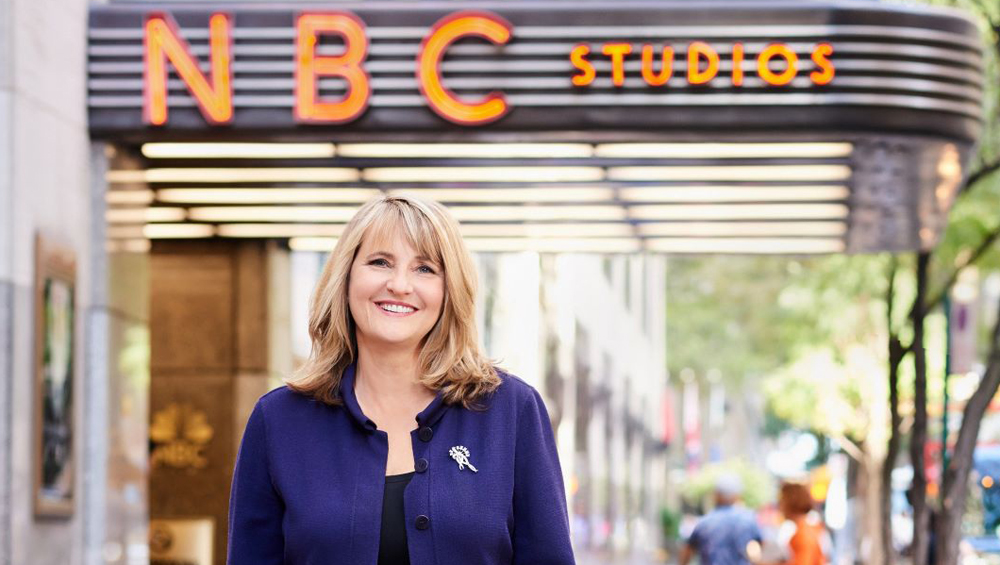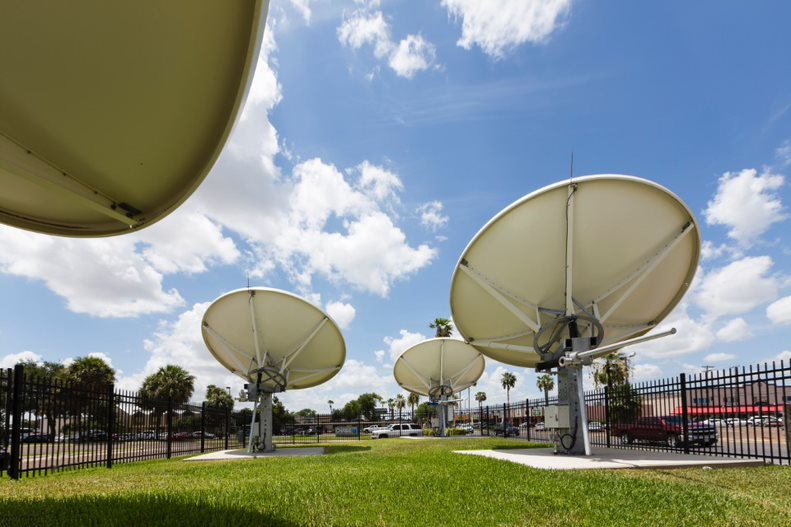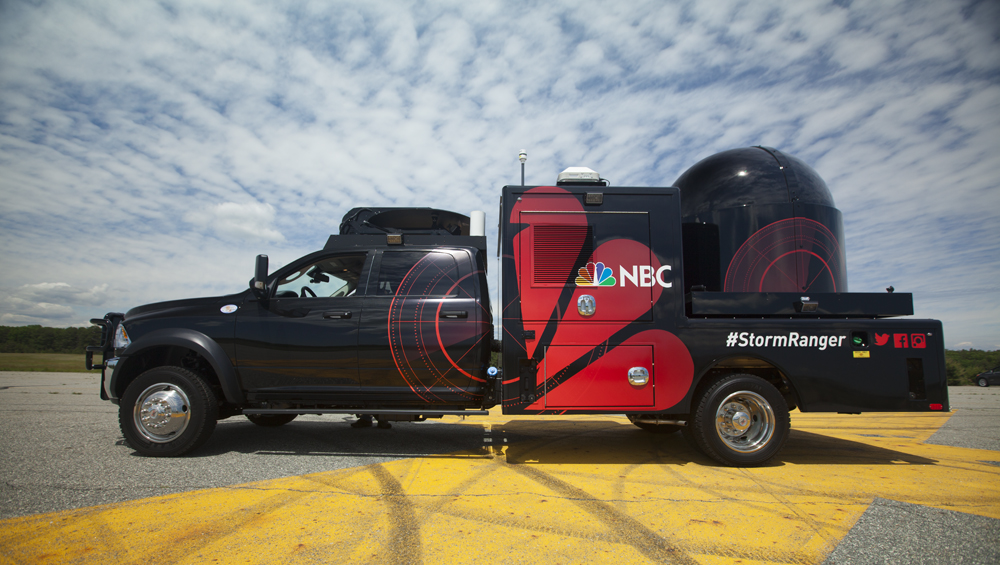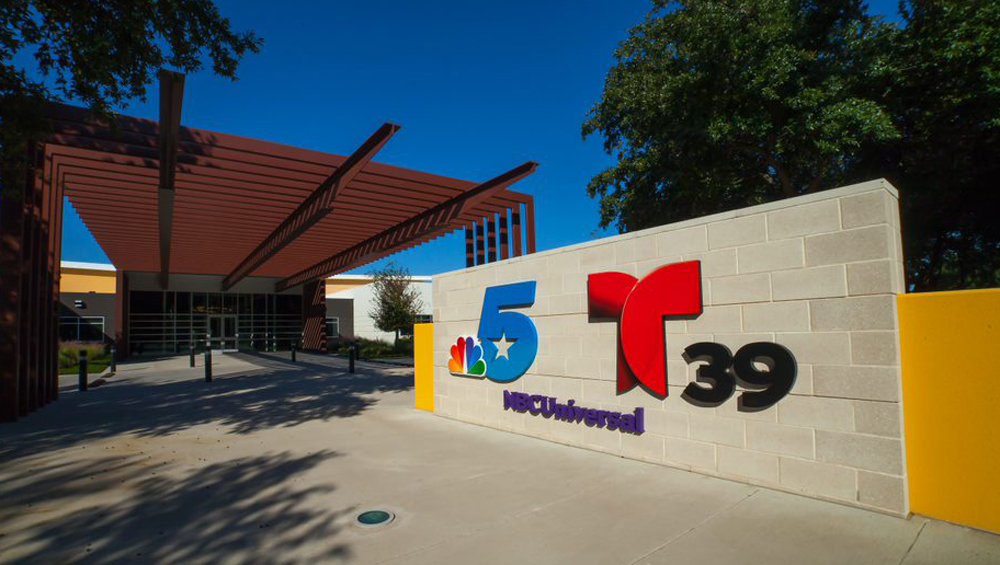
NBCU Stations’ Staab Takes The Long-Term View

Valari Staab is one of the biggest change agents in broadcast television. Ironic since she grew up without a TV.
Staab, president of NBCUniversal Owned Television Stations, was 12 years old when her parents bought a marina complex. Straight away, she was put in charge of the marina and its motel units, even supervising a small staff that stood in when she was at school or on late nights.
“I got up in the mornings and got boaters out on the lake to fish, caught the school bus and then came home and worked until the last of our guests were fed and back to their rooms,” she says. “It was fun and a great way to grow up, but it was a lot of work.”
Since her part of East Texas didn’t have television reception and her parents didn’t spring for satellite, that also meant her formative years were spent without TV. So while Staab had a hefty dose of management experience from childhood, broadcast “wasn’t a career that was on my radar at all.”
Flash forward a couple of decades and Staab would become the architect of a dramatic reinvigoration of NBCU’s owned stations under its Comcast ownership after a long, decimated stretch during the group’s GE days.
With Staab at the helm, NBCU has invested millions into its infrastructure, investigative reporting, Telemundo duopolies and weather. It has laid the track for its next generation audiences with NBCLX, a bold, multiplatform experiment that has reimagined news storytelling. And it’s also building the foundation for meaningful digital revenue as audiences increasingly migrate to streaming, launching NBC Spot On, an OTT sales initiative selling streaming inventory for its own stations, parent company and third parties. All of this is why TVNewsCheck has named NBCUniversal Owned Television Stations its 2020 Station Group of the Year.
“Valari is strategic and methodical,” says her boss, Mark Lazarus, chairman of NBCUniversal Television and Streaming. “From innovating the way local news is delivered to creating digital-first audiences with the launch of NBCLX to creating duopoly newsrooms that serve today’s bilingual audiences, Valari understands the important role that local news plays in our communities and is always looking ahead to the future of our industry.”
“We are not standing still,” Staab says of the group’s manifold efforts across audiences, platforms and generations. It might as well be her personal mantra.
Beginnings And Early Innovations
“I fell into broadcast,” Staab says of her earliest days in the industry. Having graduated valedictorian of her high school class, tuition and books for her first year at the University of Texas at Tyler were paid for, but additional expenses had her working three jobs. Then she met Frank Milton, the young general manager of KLTV in Tyler who also taught a journalism course she was taking. He encouraged her to apply for an opening at his station helping to transition to its first computerized traffic system.
An M.B.A. from Baylor University followed, as did a steady rise in the industry that included marketing and research work at KPRC Houston; director of creative services and director of marketing research at Philadelphia’s WPVI, where she spent a decade; president and GM of WTVD Raleigh-Durham, N.C., for a year and then at KFSN Fresno, Calif., which she led for almost four years.
That path took her to San Francisco’s KGO, where she worked as president and GM for eight years. At KGO, she expanded local programming by 50% and dramatically expanded its digital reach, launching streaming newscasts, apps and a social media presence when all such platforms were in their infancy.
“The biggest thing I learned there was how much the world was going to change in the coming years,” she says of her San Francisco tenure, noting KGO’s proximity to Twitter, Facebook and YouTube had a foundational effect in framing her view of local TV news’ path ahead.
“It showed me how a local station could survive in the future,” she says.
Triage At NBCU
When Staab arrived as president at what was then known as NBC Owned Television Stations in 2011, she found herself leading a group that had seen its resources stripped to the bone by its former GE ownership. Infrastructure was crumbling, overworked staffers were running on fumes and morale had cratered.
“In New York City, literally their trucks were breaking down on the way to news stories,” Staab says.

Looking skyward at KTLM Telemundo 40 in McAllen, Texas.
WNBC’s newscasts had moved out of the studio and were being shot in a conference room. “There was no depth to the shot because there was no depth to the room,” she says.
So Staab went to her boss, Steve Burke, then CEO of NBCUniversal, and began identifying the group’s most acute problems. “There was a lot of triage going on,” she says.
Miami was one market in most need of it. As GE had been trying to sell the station, it had stopped replacing positions when they became open and had become “so dramatically understaffed it was crazy,” Staab says. “It was just trying to get enough people to get their newscast on the air and then put in that next layer of support so they weren’t working all the time and feeling like they could never get a leg up.”
Burke could see for himself how badly investment was needed, and Staab became the person who would put the investment plan together to make the stations viable once more.
Staab’s reinvestment had multiple pillars, and one of the earliest and most important was in NBCU stations’ investigative reporting brand. One of GE’s most destructive legacies was slashing away some of the most experienced, veteran journalists at NBCU’s stations. Investigative teams — or I-teams — had been cut down to one person in some places and done away with entirely at others. Staab knew she could draw on the I-teams’ old luster with consumers for a key branding opportunity.
“My thought was relaunch these investigative brands in a strong way that would immediately put experienced journalism back in the newsroom,” Staab says. “It gave something to remind people of who they were before the station had weakened.”
Investigative units were beefed up with some stations, like the Bay Area’s KNTV, topping out at 11 people. They were producing tough, substantial stories nearly every day and picking up some of the reporting slack from newspapers, which had begun their own inexorable decline.
At Weather And Technology’s Vanguard
Staab knew weather is one of the main reasons viewers tune in to local news, “so the only way to really come back from being a weak newscast was to be strong in weather.”
That led her to take a deeper look at meteorology and the tools used to create forecasts, which in turn shaped itself into a long-term plan to improve NBCU stations’ own tools. Staab looked for radar gaps in major markets like New York, where WNBC put its own radar at Rutgers in New Jersey. In doing so, it filled in a more detailed radar picture than the National Weather Service’s Long Island-based radar could provide.
NBCU’s stations also custom built a fleet of “Storm Rangers,” portable radar trucks that could be moved around markets — or between them — to get a better picture of dangerous or volatile weather events. Today, half a dozen of the million-dollar trucks are in circulation in the group, augmenting weather coverage daily.
 It all comes down to better arming local meteorologists, who Staab says have an inherent advantage over a smartphone’s weather app any day. “Nobody knows how the weather reacts in your market like your local meteorologists do,” she says.
It all comes down to better arming local meteorologists, who Staab says have an inherent advantage over a smartphone’s weather app any day. “Nobody knows how the weather reacts in your market like your local meteorologists do,” she says.
From her earliest days at NBCU, Staab also made a priority of investing in the stations’ technological infrastructure. As her tenure went on and IP-based technology began to appear on the horizon of an industry long-steeped in SDI-based systems, she made one of her boldest moves in greenlighting local TV’s first IP-based facilities — first in Philadelphia, then Las Vegas and Boston.
“I have always told the group we have got to be looking ahead and not behind when we build a facility,” Staab says.
Jeff Morris, SVP, technology and operations for the group, concurs: “When you make these decisions … you are making them with the long term in mind, and we didn’t see, knowing that, how we could possibly move forward with a standard that was on its way out.”
NBCU blazed a trail with the new facilities, particularly in Las Vegas, where the technology isn’t actually on-premises, and Boston, where the scale and technology in tandem are literally unprecedented.
“The employee impact, the sales impact by bringing visitors in, the community impact is overwhelmingly positive and has contributed to things like ratings increases and revenue increases,” Morris says. “You hear people come into the shop and say: ‘I never thought I would work in a place like this.’ ”
Telemundo, NBCLX And Spot On
Keeping an eye on the future also informed another of Staab’s key investments: the Telemundo stations the company also owns, which she took charge of in 2013 and now number 30.
For Staab, Telemundo’s promise lies in its demographics — an 18-49 viewership that skews younger than NBCU’s stations. It made sense to invest in resources for its younger, Hispanic (and often bilingual) audience, both to better compete against its Univision competition and to create useful synergies with the NBC stations for both reporting and audience development.

KXAS and KXTX in Dallas
In duopoly markets, NBCU’s Telemundo stations have enjoyed a wealth of resources including Spanish-language weather reporting, Spanish-language news apps and conjoined newsrooms where daily collaborations occur across newsgathering, sales and marketing and digital platforms.
“The best thing that really happened to us was for [Staab] to become our leader,” says Jorge Carballo, president and GM of WTVJ and WSCV in Miami. “She understands the business and is willing to make the investments and has the vision.”
Staab’s vision is equally trained on connecting with younger audiences more broadly. The problem is it’s hard to reach those viewers in conventional local newscasts (the early pandemic months notwithstanding), so in 2019 she launched NBCLX, initially a digital-only platform geared at courting millennials with different storytelling modes and visual aesthetics. (The “L” in its moniker stands for local, while the “X” is shorthand for exponential abilities to tell stories.)
“LX is our ability to innovate news, which is really hard to do,” Staab says. “There is no great way to experiment on a big enough stage to see what is resonating or not resonating. LX gives us that. There are no limits.”
NBCLX has had quickly cascading effects with viewers, triggering more investments including a new Dallas-based studio, the launch of a two-hour weekday newscast on its own multicast network, a new Roku app and a roadmap to expand into local iterations across NBCU station markets from year’s end through 2021.
As the experiment scales up, Staab is one of LX’s most ardent viewers. “I am not their demo, but I absolutely love them,” she says. “I am sure we will do things that don’t work and that’s fine. We will switch gears and try something else.” (Read more about NBCLX here.)
 Staab isn’t afraid of experimenting in the ad business, too. In February, NBCU’s stations launched NBC Spot On, an advanced video ad business for local and regional CTV and OTT advertisers selling its own inventory as well as that of its parent company and third-party OTT. The new business allows the group “to do data-targeted, behavior-targeted” campaigns across 100% of U.S. DMAs, says Shawn Makhijani, SVP of Spot On and business development and strategy.
Staab isn’t afraid of experimenting in the ad business, too. In February, NBCU’s stations launched NBC Spot On, an advanced video ad business for local and regional CTV and OTT advertisers selling its own inventory as well as that of its parent company and third-party OTT. The new business allows the group “to do data-targeted, behavior-targeted” campaigns across 100% of U.S. DMAs, says Shawn Makhijani, SVP of Spot On and business development and strategy.
Of course, Spot On launched just before the COVID-19 pandemic set in, roiling ad sales across TV and plunging the industry into the protracted uncertainty where it remains. NBCU’s stations had their own casualties, among a clutch of broadcasters who announced layoffs this spring in the wake of ad losses.
NBCUniversal Owned Stations President Valari Staab has put targeted reinvestment at the center of her strategy to reinvigorate the group. Her strides in technology, weather and investigative reporting, duopoly bilingual newsrooms and… Click To TweetStaab feels the weight of those hits, and knows that the mettle of her leadership has been tested. “There is definitely nothing worse than going through layoffs and it is the last thing that any of us wanted to do,” she says. “The biggest thing we have learned is that we have got to stay connected and we have got to stay talking with each other.”
But she also says the pandemic has had one bright spot for the industry: more people turned to local TV news than ever with a renewed sense of urgency around the stories it has been telling. Staab says that’s a moment the company needs to seize on, taking its cues from viewers on what it needs to do to stay relevant.
“Local news is important … and we can’t lose that,” she says. “We have got to evolve and be what people need us to be.”
Read the other Station Group of the Year 2020 stories here.
































Comments (0)